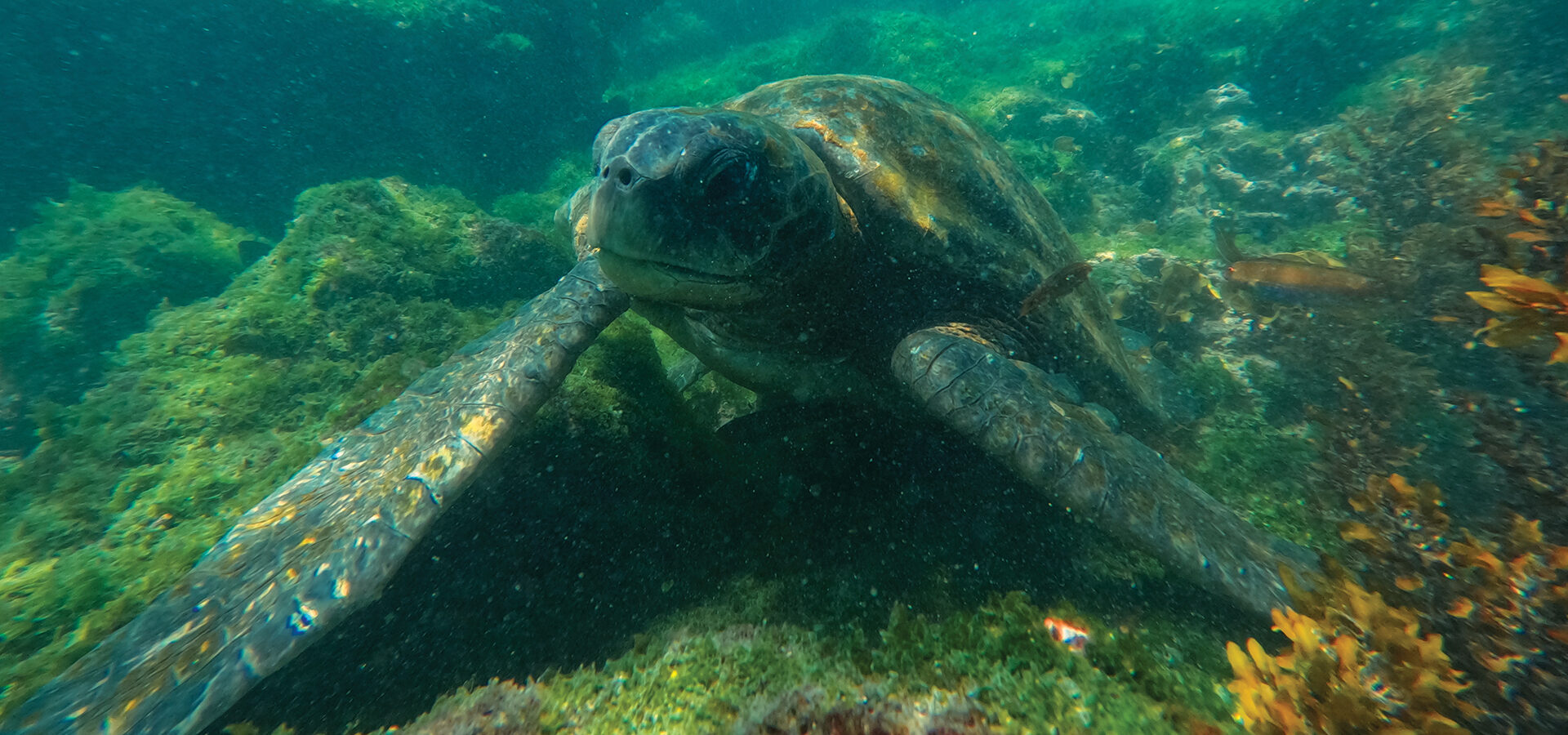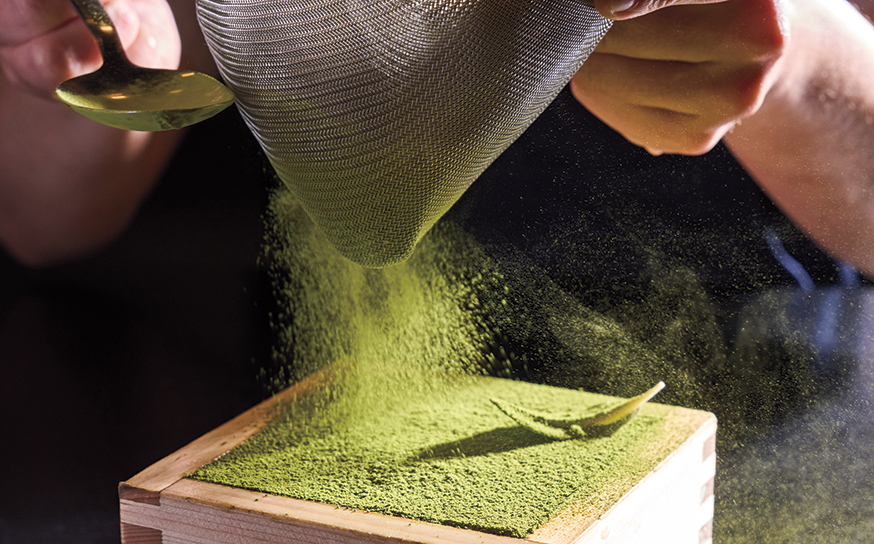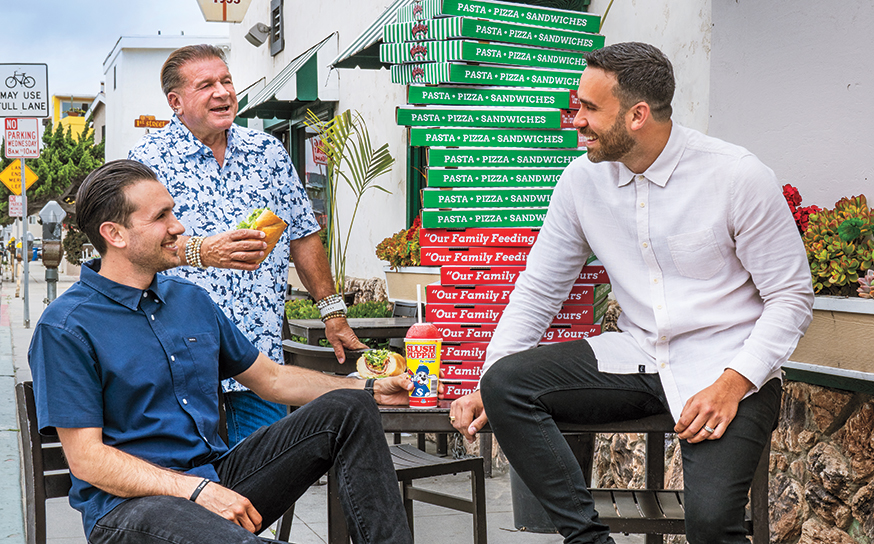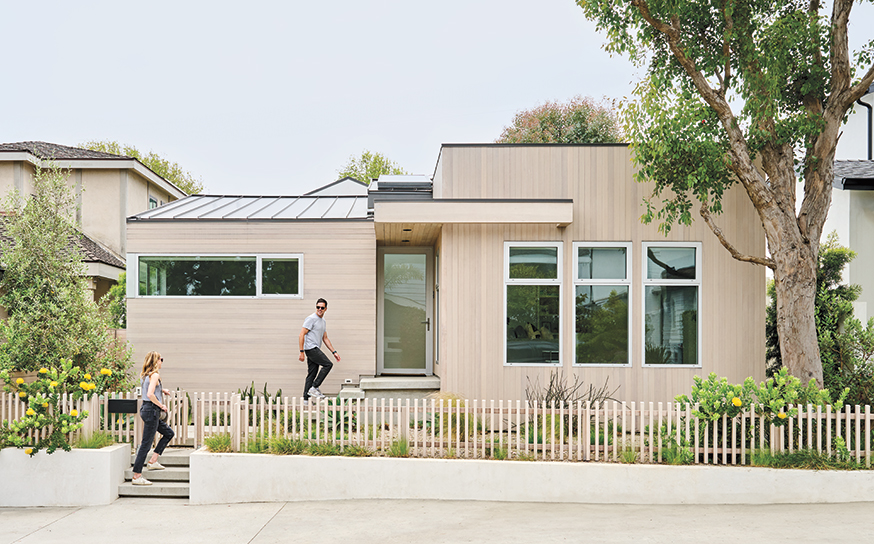“Shark!”
I knew I’d hear that word eventually, although it sounded more like a muffled “Therk!” coming from behind the snorkel’s mouthpiece. I dunked my head back into the frigid water and turned toward the coastline to see my son, Kayden, swimming after a 5-foot blacktip reef shark—his GoPro stretched out in front of him like he was chasing the shark down for a selfie and an autograph.
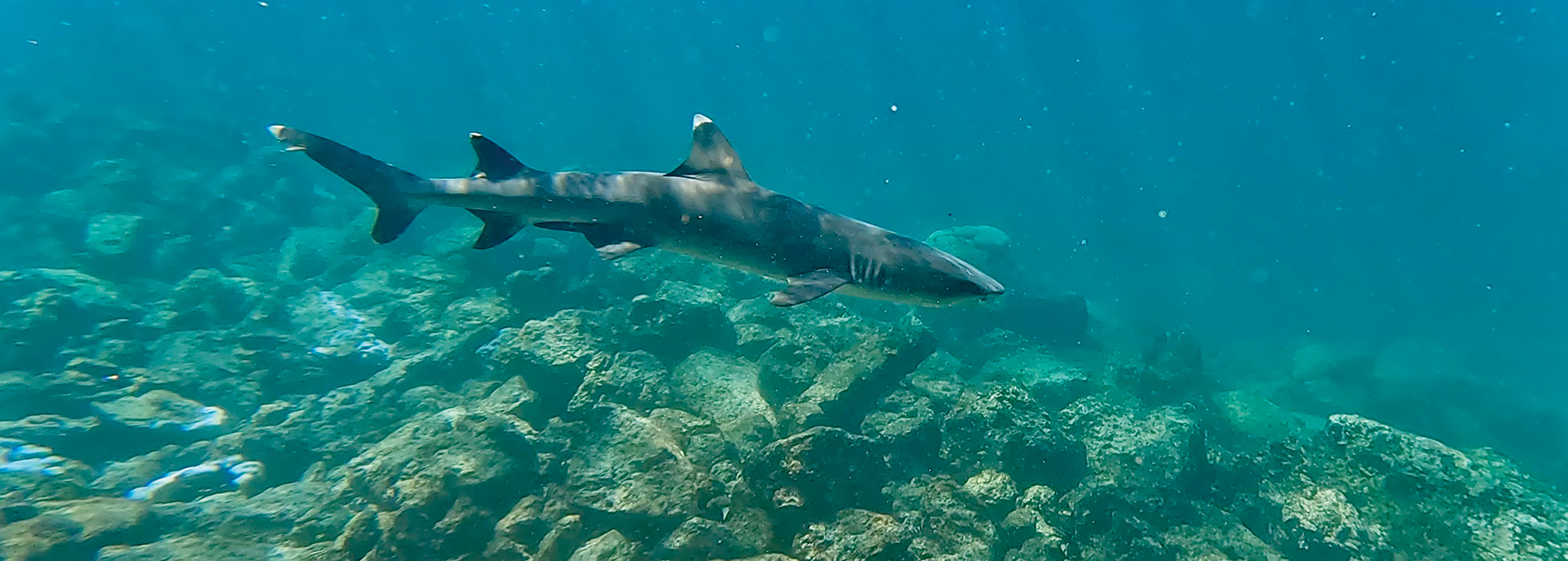
Normally this wouldn’t be high up on the list of things a parent would be relieved to see, but the occasion checked the final item off a sightseeing wish list that included marine iguanas, sea turtles, penguins, sea lions and various species of ray. And because the shark, like most animals in the Galápagos Islands, couldn’t be less concerned about the presence of humans, there was a sort of voyeuristic peace to the encounter that could only have been improved with a narration by David Attenborough.
The snorkeling session was our last after six days aboard the Theory, one of three yachts belonging to Ecoventura—a travel company specializing in luxury tours around the Galápagos and the newest member of the esteemed Relais & Châteaux portfolio. Part naturalist expedition, part floating five-star hotel, Ecoventura’s bucket-list experience was the antithesis of a big-box cruise: distinctive, purposeful, educational. It was, quite simply, the trip of a lifetime—a journey that spanned 530 nautical miles, crossed the equator six times, sailed through a pod of over 200 dolphins, and saw copious amounts of cachaça and Dramamine consumed during the type of exquisite meals one cannot help but photograph.
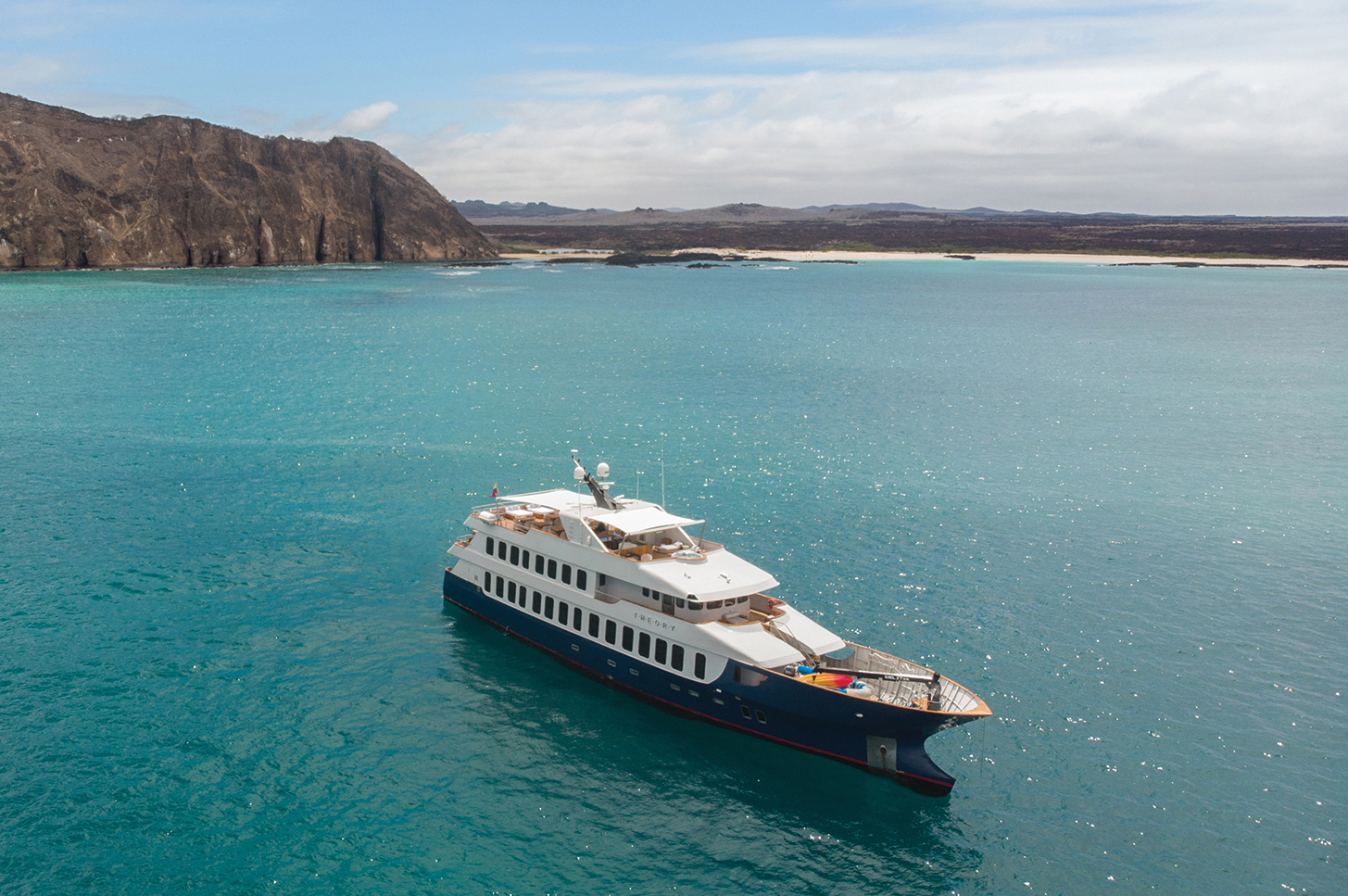
Photo courtesy of Ecoventura
Back on the boat, after trading in our snorkel gear for a warm cup of hot chocolate, our guide, Billy Maquilon, fielded questions about everything from the temperature of the water and the makeup of sedimentary rock along the cliffs to the differences between seals and sea lions. And boobies. Lots of questions about boobies.
As the islands peeled back more layers, so did we. We matched the animals’ curiosity and grew into our fearlessness.
The animal inquiries usually begin the same way. “Do they always…?” “Is it normal for them to…?” It’s hard to fault people’s inability to comprehend the profound level of intimacy within these encounters, but Billy gets it. He’s been doing this for 33 years—chaperoning everyone from professional athletes and movie stars to family groups through the islands. No matter the question, he says, the answer always ties back to a unifying, fundamental reality about this place and its creatures.
“They haven’t changed. We have.”
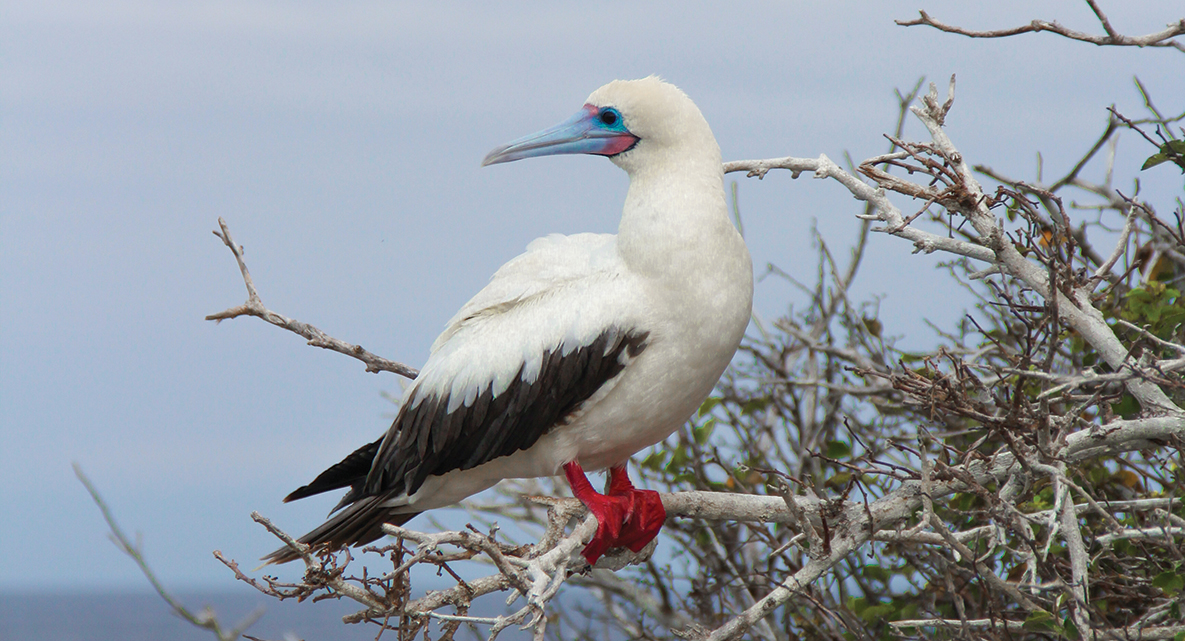
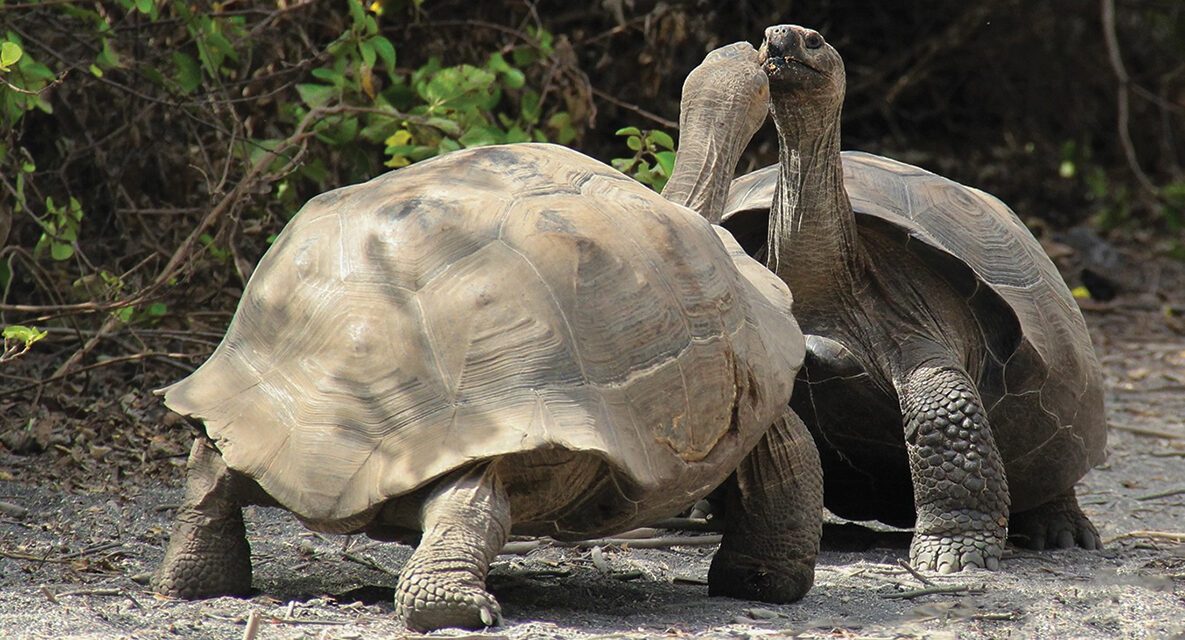
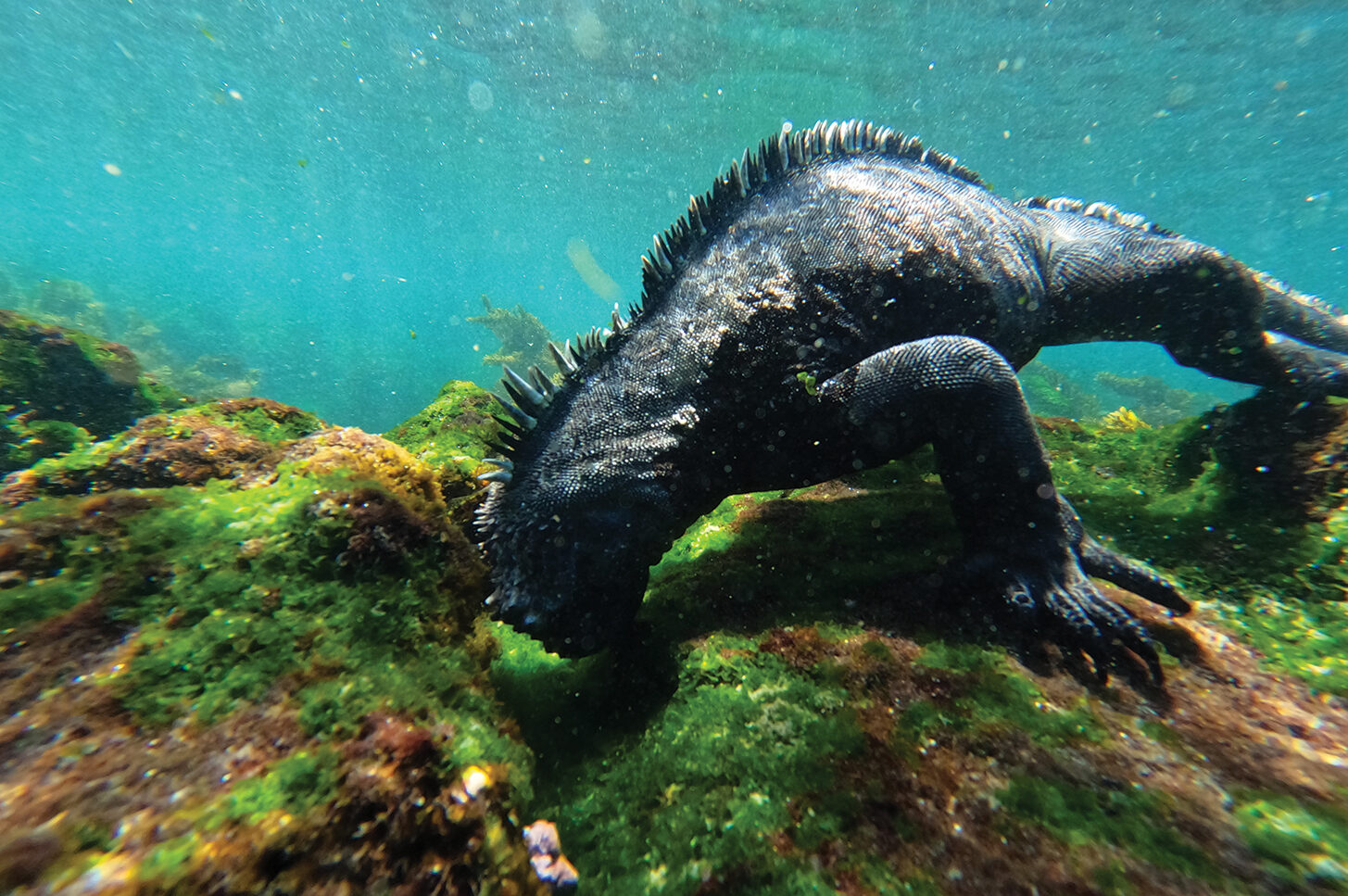
The Galápagos comprises 13 main islands, only four of which are inhabited by humans. Its cumulative land mass is well under 5,000 square miles, but the archipelago is surrounded by 23,000 square miles of ocean. After it was formally established in 1959, the Galápagos National Park deemed 97% of the islands as protected. In 1986 the Galápagos Marine Reserve was created to protect their surrounding waters.
The first tour company began operations in the archipelago in the mid-1960s. Today there are nearly 1,000 tourism service companies in operation servicing over 200,000 people per year. A whopping 90% of the island’s income is related to tourism.
In March 2020 the Galápagos and its population of 32,000 inhabitants went into a full lockdown for no less than four months. The Ecuadorian postal service collapsed. Gas wasn’t difficult to come by—a lack of cruise-vessel traffic freed up fuel resources—but many on the island turned to bartering goods and services.
“I went almost a year without work,” remembers Billy. “The reactivation was so slow and gradual; even now we are still working on it. There was no good news or hope for such a long time for all of us who depend totally on tourism. It was sad, desperate and hopeless. A nightmare.”
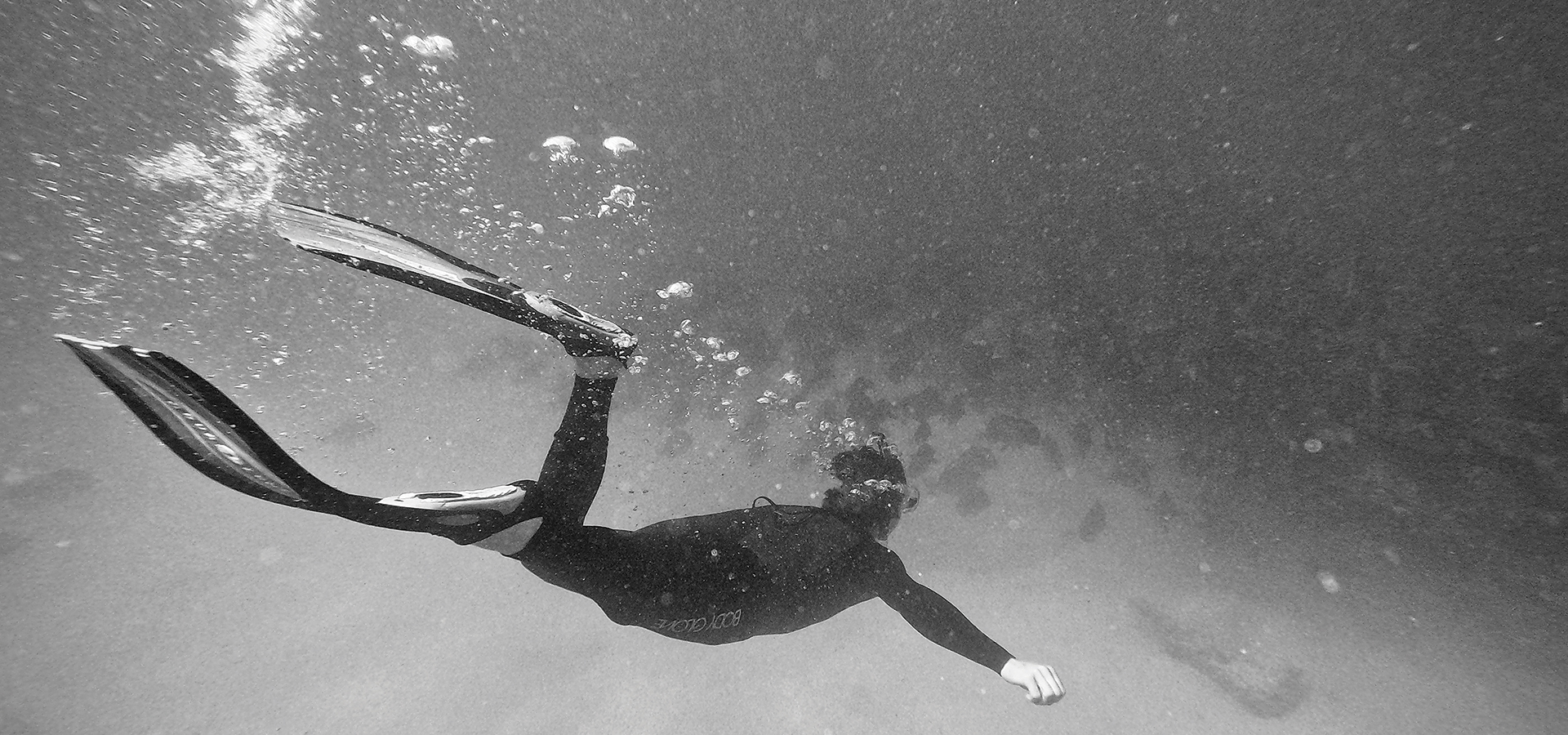
While tourism in the Galápagos has slowly resumed, evidence of the pandemic’s harsh effects can be seen throughout the towns of Santa Cruz and San Cristóbal, leaving the Ecuadorian government to strike a delicate balance between the needs of its economy and its ecosystem. It’s hard not to feel the duality of a place that feels so powerful yet so fragile. Billy often hears from past guests who, in the wake of their trip, have chosen to reevaluate core aspects of their lives or make a career switch altogether. Forty years ago, Billy was one of them.
“I was an animal lover from an early age,” he says, “rescuing dogs, cats, chickens, anything. My mom’s house was a kind of zoo when I was 17. After high school I was studying to be a lawyer because it’s a tradition in my family—my father’s a lawyer, my brother’s a lawyer, my uncle’s a lawyer. Then I met somebody who was born in Galápagos, and that was my connection to the islands. I came here and said, ‘This is for me.’ I changed to studying biology and natural sciences and became a guide.”
Billy’s passion for the islands is palpable, as is that of his naturalist colleague, Sophia, and the entire crew—from captain to bartender. With only 20 guests aboard each boat, everything feels distinctive and personal, with just enough routine to breathe familiarity into an unfamiliar environment.
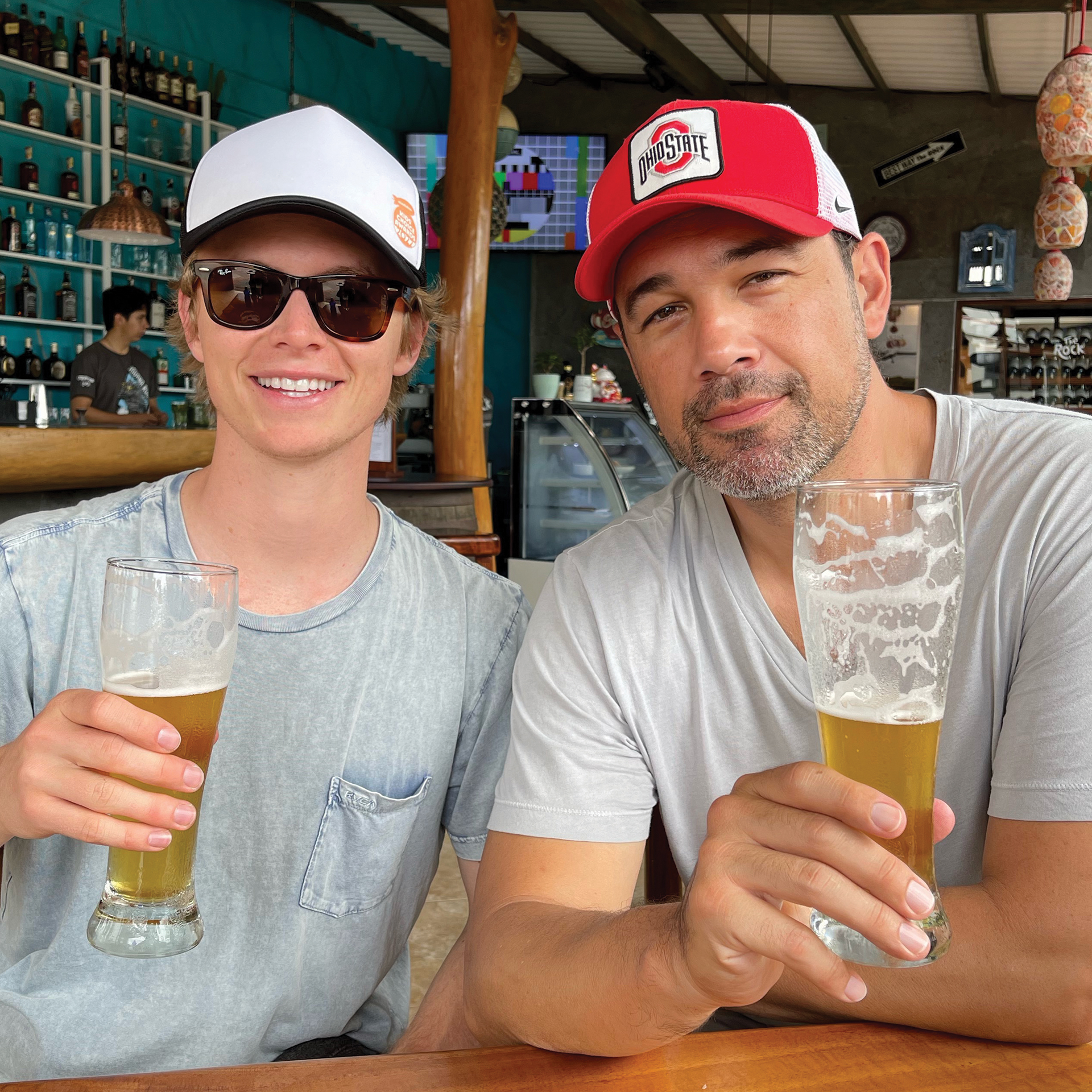
Mornings start with a buffet of comfort foods and local specialties served in the main salon and dining area: eggs and fresh fruit, granola and yogurts, smoothies and juices, Ecuadorian longaniza sausage and breakfast potatoes, espresso and tea. After a short briefing, activities commence.
On Monday: bird-watching off Great Darwin Bay on the remote Isla Genovesa, admiring the red-footed boobies nesting in the palo santo trees. On Tuesday: paddling through Black Turtle Cove on the north side of Santa Cruz as golden rays and hawksbill turtles glide through the shallow waters. On Wednesday: disembarking at Urbina Bay on Isla Isabela and walking amongst the giant Galápagos tortoises, followed by a short panga ride to snorkel with marine iguanas as they feast on lush green algae that clings to the black volcanic rock beneath the surface of the ocean. And on and on for four more days, until your body has acclimated to the water and your eyes have sharpened to spy even the smallest of creatures hiding within the brush.
Rooms are cleaned and turned down each day, and evenings culminate with a five-course meal that includes main courses like Ecuadorian encebollado, grilled Basque-style octopus, corvina with coconut rice and vegetables, spiced duck breast, poached langostino, and pork pancetta with guava and spiced pineapple.
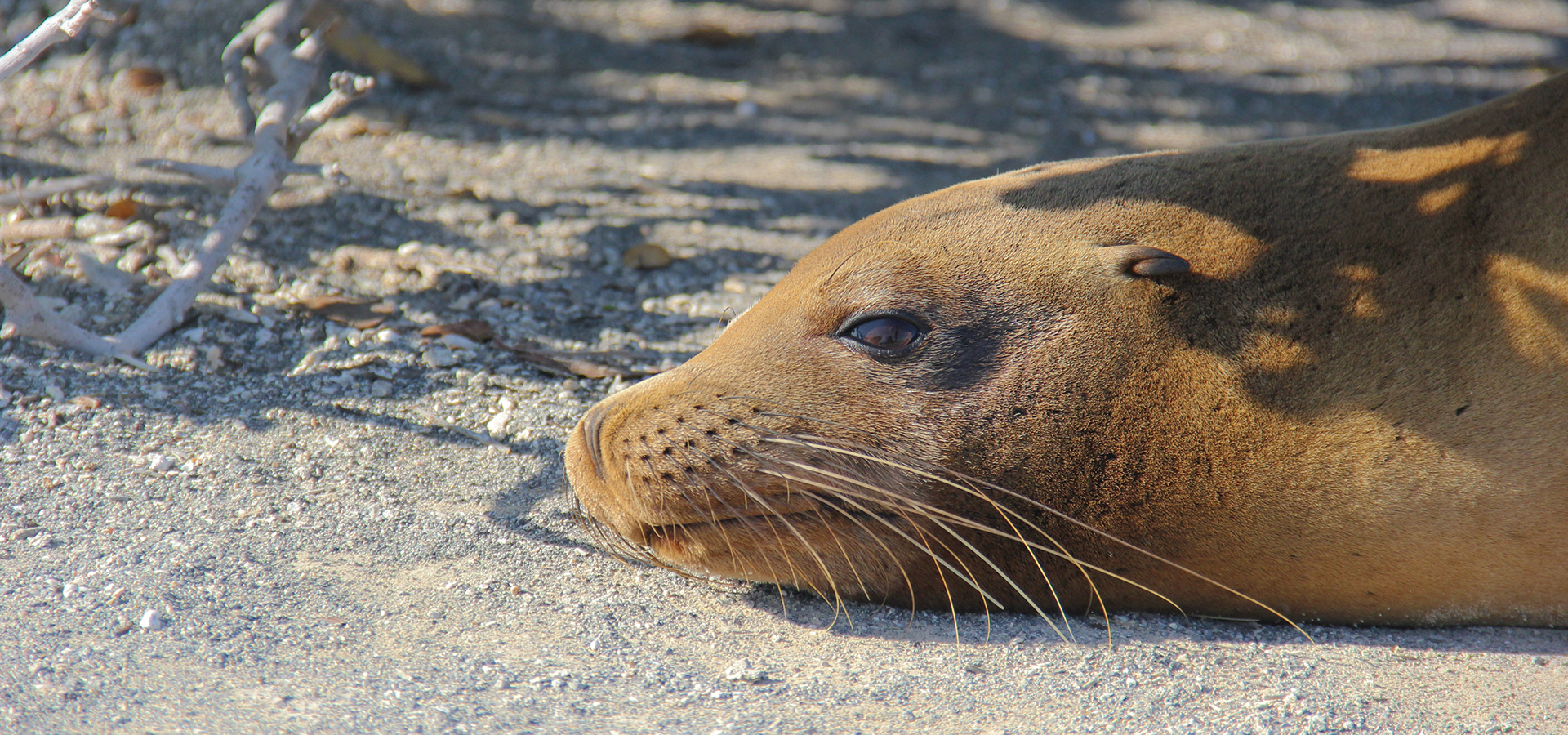
Each night, lubricated by local wines and spirits, a few of us would retreat to the top deck and unpack the day’s experiences, admiring the stars and recounting all of Mother Nature’s funky contradictions we’d encountered that day: mockingbirds that don’t mock, poisonous snakes with venom glands that have atrophied, penguins that have never seen ice. Animal encounters on the Galápagos aren’t overstimulated and zoo-like. You have to search for the gold. You have to do the work.
As the islands peeled back more layers, so did we. We matched the animals’ curiosity and grew into our fearlessness. For some it was trying new regional delicacies; for others it was ditching the wetsuits to feel fully enveloped by the sea. For my son it was chasing after sharks and marine iguanas … and me trying to keep up with him every step of the way. On our last day at sea, some of the passengers took turns cannonballing off the top deck—a sort of baptismal graduation before we headed back to land.
I’m not sure I’d ever travel back to the Gálapagos—not because I wouldn’t want to experience it again but because it feels like the type of place that should only be enjoyed once, its magic preserved for as many generations as possible before the irreparable damage we’ve done to the environment starts to leave a deeper footprint. Sustainability and conservation are at the heart of Ecoventura’s mission. The company puts their money where their marketing is through the creation of the Gálapagos Biodiversity & Education for Sustainability Fund, in partnership with the Charles Darwin Foundation and the National Park Service, and their involvement with Ecology Project International.
But once you set out to sea, nature does the talking. Hopefully everyone who travels here takes notes.






